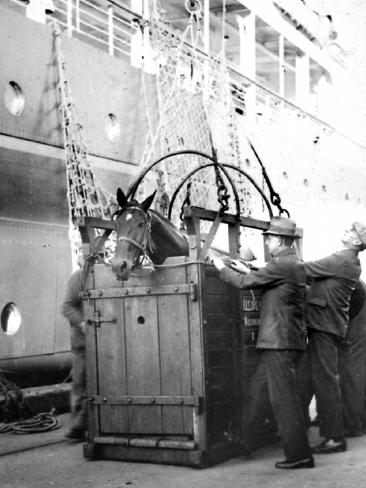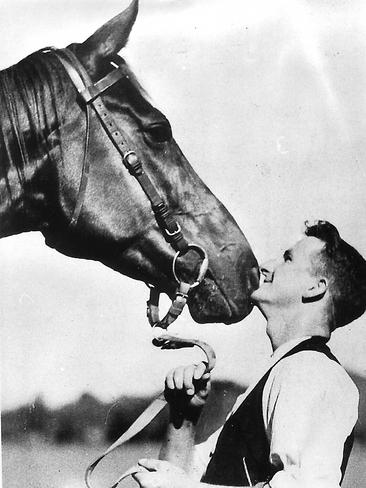RACING stories - much like fishing stories – are prone to exaggeration.
The grandiose language of the turf makes them that way.
Jockeys are accused of “slaughtering’’ a horse yet no jockey ever pulled a gun midrace. Horses are said to have won “by a furlong’’ but no horse even won by 200m.
But there is one racing story that is as good – perhaps even better – than history has made it out to be.
It is the story of the great galloper Phar Lap winning its only overseas start, the Agua Caliente Handicap, North America’s richest race, at the racetrack of the same name in 1932.
For years I had read and heard about all the stories of that race which seemed beyond the parameters of racing reality ... that Phar Lap was caught wide for most of the race, rushed to the lead midrace, fought off a challenger on the home turn and won being eased down.
But horses generally just can’t run that sort of race. If you are caught wide and run the front mid-race you barely ever win.

Deep down I felt that whatever the facts truly were they had been enhanced by our desire to embrace and embellish the legend that was Phar Lap.
But then history had its say in indisputable black and white facts courtesy of an old news reel of the race.
It appeared on You Tube in 2007. So far it has 187,000 viewings including at least 1000 that are not mine. See it once and you just keep going back.
I urge you to watch and enjoy.
You will conclude that makers of the famous Phar Lap movie did not have to embellish the race at all – it was dramatic enough as it was.

There was the tardy start. Other horses kicking dirt in its face as the horse - ridden by Bill Elliot - fell 10 lengths off the pace. The bold move to the lead 800m from home. The dogged duel on the final turn. And then – majestically – the ease down near the finish.
It’s stirring stuff. The essence of the day was beautifully captured by Bert Wolfe from the Melbourne Herald who covered the occasion.
“Today he is the ‘big news.’’’ Wolfe wrote.
“Every newspaper of any consequence in the United States is printing stories of the success of ‘the Big Train from the Antipodes.’ They are saying that Phar Lap and his connections made American trainers and jockeys look like ‘suckers.’’’
Of the race itself, Wolfe wrote: “As the field passed the judge for the first time (a mile from home) Phar Lap was in seventh place ten lengths from the leaders. Leaving the straight he was in the middle of the track and holding his place. When the back stretch was reached (six furlongs from home), Elliot let him go. In a flash his amazing speed was apparent, and the crowd, following his dash with intelligent interest, let forth a mighty cheer. As one writer said afterwards, ‘He won America in an eighth of a mile.’
Of all the famous sprints Phar Lap has ever made that two furlongs from the six furlongs to the half mile was his greatest. He ran the journey in 22 seconds, and when he arrived at the half mile he had left the field astern. At the turn he was a length in front, with Reveille Boy gaining ground fast.
“I must confess I could not tell whether Elliot was giving him a breather or not. My field glasses would not remain still. When fairly in the straight Reveille Boy almost seemed to head him, and the thought flashed through my mind that owing to his foot injury the amazing dash from seventh to first had taken its toll. But just when everybody was getting ready to cheer the American horse, Phar Lap gave a few terrific bounds and in a twinkling he was lengths in front and Elliot was easing him up passing the post well clear of the field.
It is impossible to describe the scene at the finish of the race. The crowd cheered itself hoarse, the paddock seethed with excitement, and when he returned to the winner’s circle pandemonium reigned.

It was a great moment, and the coolest person of all was little Elliot, who, in a quiet voice, said, ‘When do they want me to weigh in?’
The reporter pointed out that 50,000 people were present to watch the race and that the electric mid-range sprint which took Phar Lap to the lead was the fastest two furlongs the horse had even run.
Wolfe clocked the horse at 22 seconds for those two furlongs – fast for any era, never mind a dirt track in the 1930s.
Wolfe admitted the excitement of the day took its toll on him as his hands trembled as he watched the race through binoculars.
It was that sort of day.
Postscript: Just 16 days after winning in Tijuana, Phar Lap was dead.
Early on April 5, 1932, his strapper for the North American visit, Tommy Woodcock, found him in severe pain and with a high temperature at his stable in California. Within a few hours, Phar Lap haemorrhaged to death. An autopsy revealed that the horse’s stomach and intestines were inflamed, leading many to believe the horse had been deliberately poisoned.
Watch the entire race here:


Add your comment to this story
To join the conversation, please log in. Don't have an account? Register
Join the conversation, you are commenting as Logout
Here’s what you can expect with tomorrow’s Parramatta weather
As spring moves into summer what can locals expect tomorrow? We have the latest word from the Weather Bureau.
Child rapist, killer walks free from prison after 38 years
A convicted child killer has walked free from prison after 38 years behind bars for raping and murdering nine-year-old Deborah Keegan in her western Sydney bedroom.